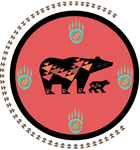At the time that the Qungasvik prevention approach was being developed by Yup’ik communities, no existing tools or measures existed to assess the outcomes that Yup’ik communities had identified as most desired for their youth. Communities wanted to achieve two primary outcomes for youth:
1) In the short-term, they wanted to grow protective strengths in the community, the family, and the individual youth using Yup’ik cultural teachings and practices.
2) Over the longer-term, through these protective cultural experiences, they wanted to ultimately instill in young people reasons for life and reasons for sobriety (reflective processes about alcohol).
The research partnership has been a key component in this sustainability plan for communities to continue to deliver prevention activities and services utilizing the Qungasvik approach and Qasgiq Model. Researchers from the University of Alaska and the University of Minnesota Medical School have been working for the past two decades to establish an evidence base showing the effectiveness of the approach for reducing Alaska Native youth risk for suicide and alcohol misuse.
The approach deals with the new problems faced by youth today, using the traditional structures of organizing that the community has used for thousands of years. So while Qungasvik uses local expertise and local staff to implement the intervention, local capacity to execute the program varies in each community, and developing this capacity in settings where it is not yet fully formed becomes an important part of the intervention's long-term and enduring sustainability in the community.

